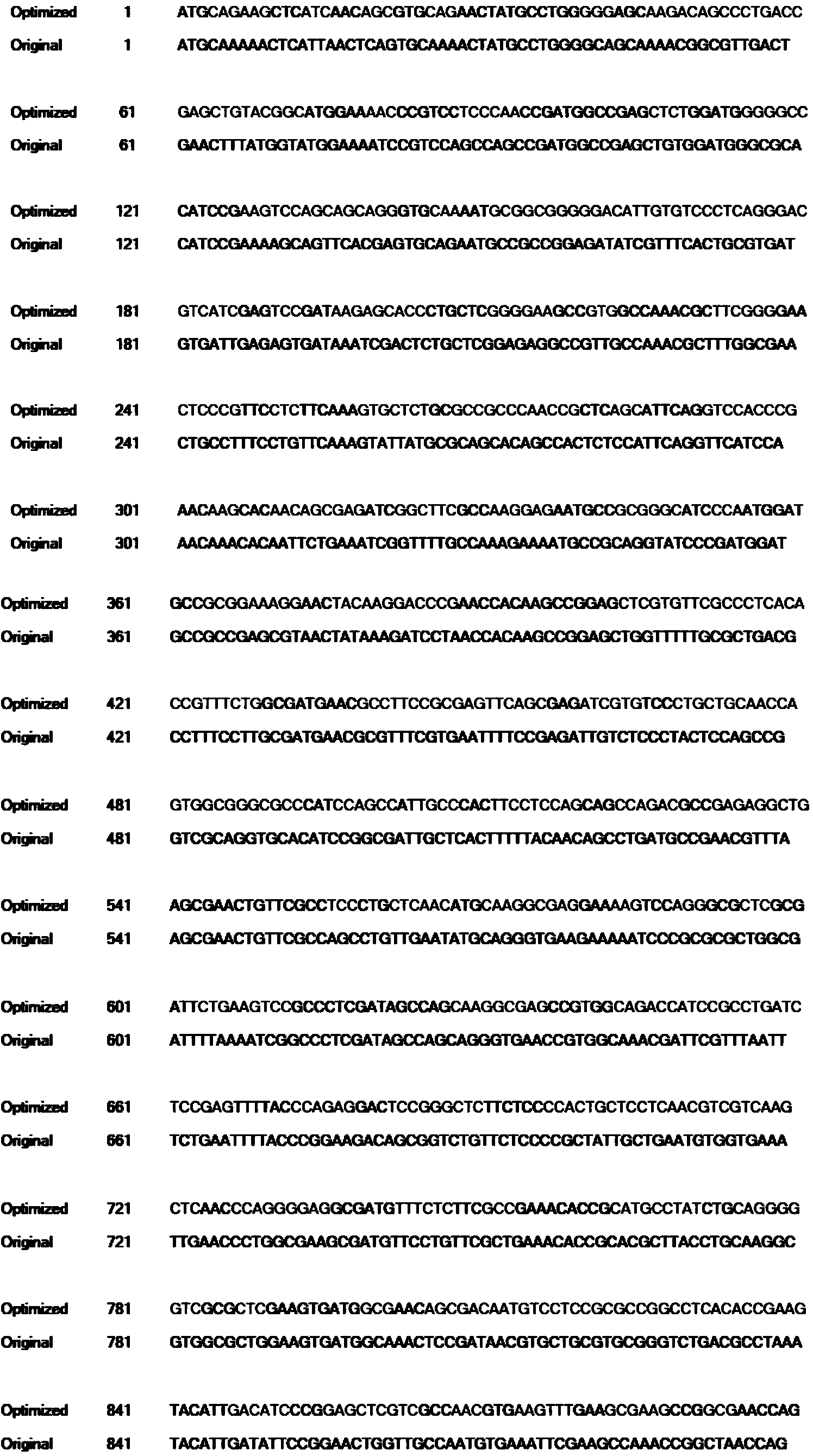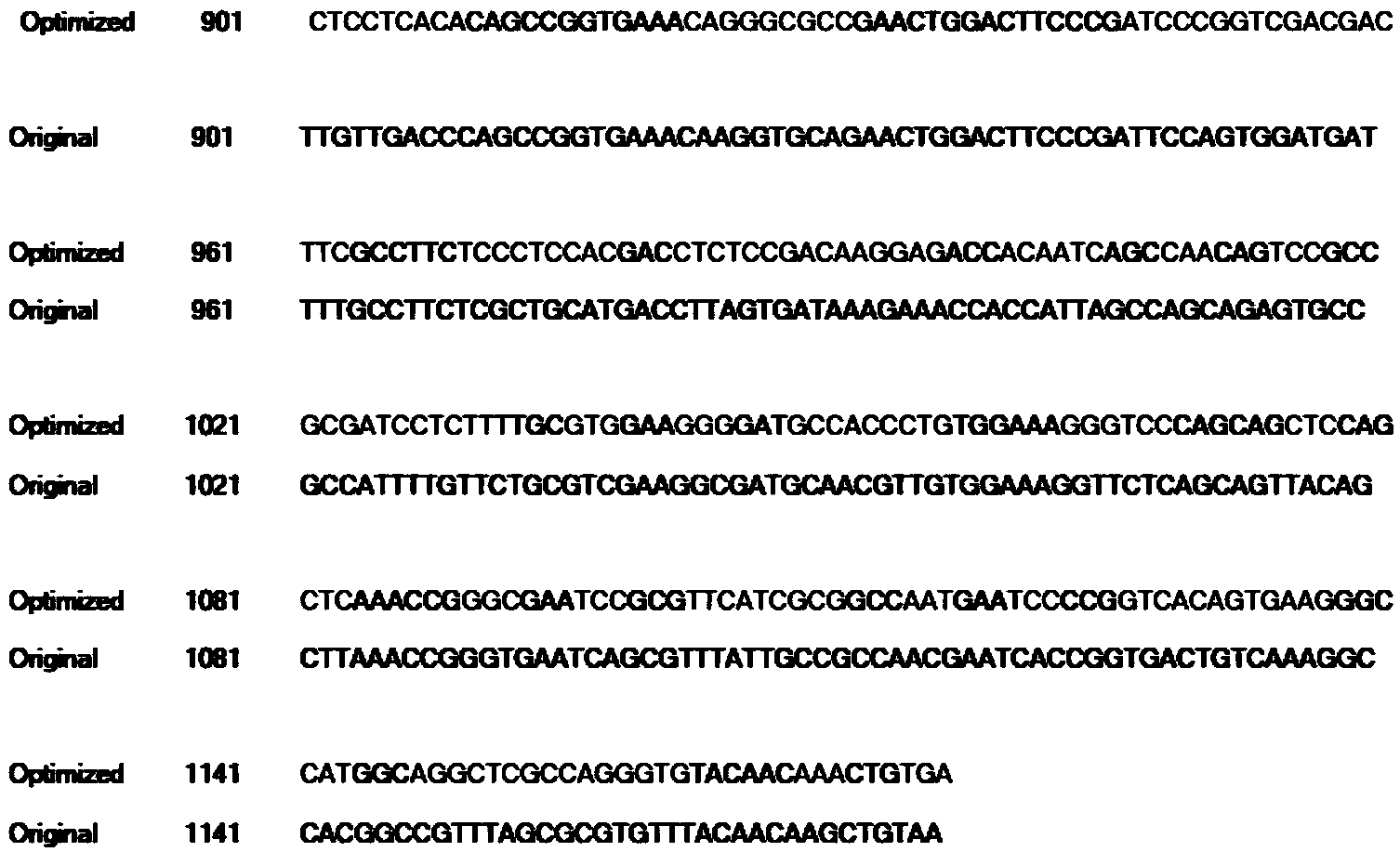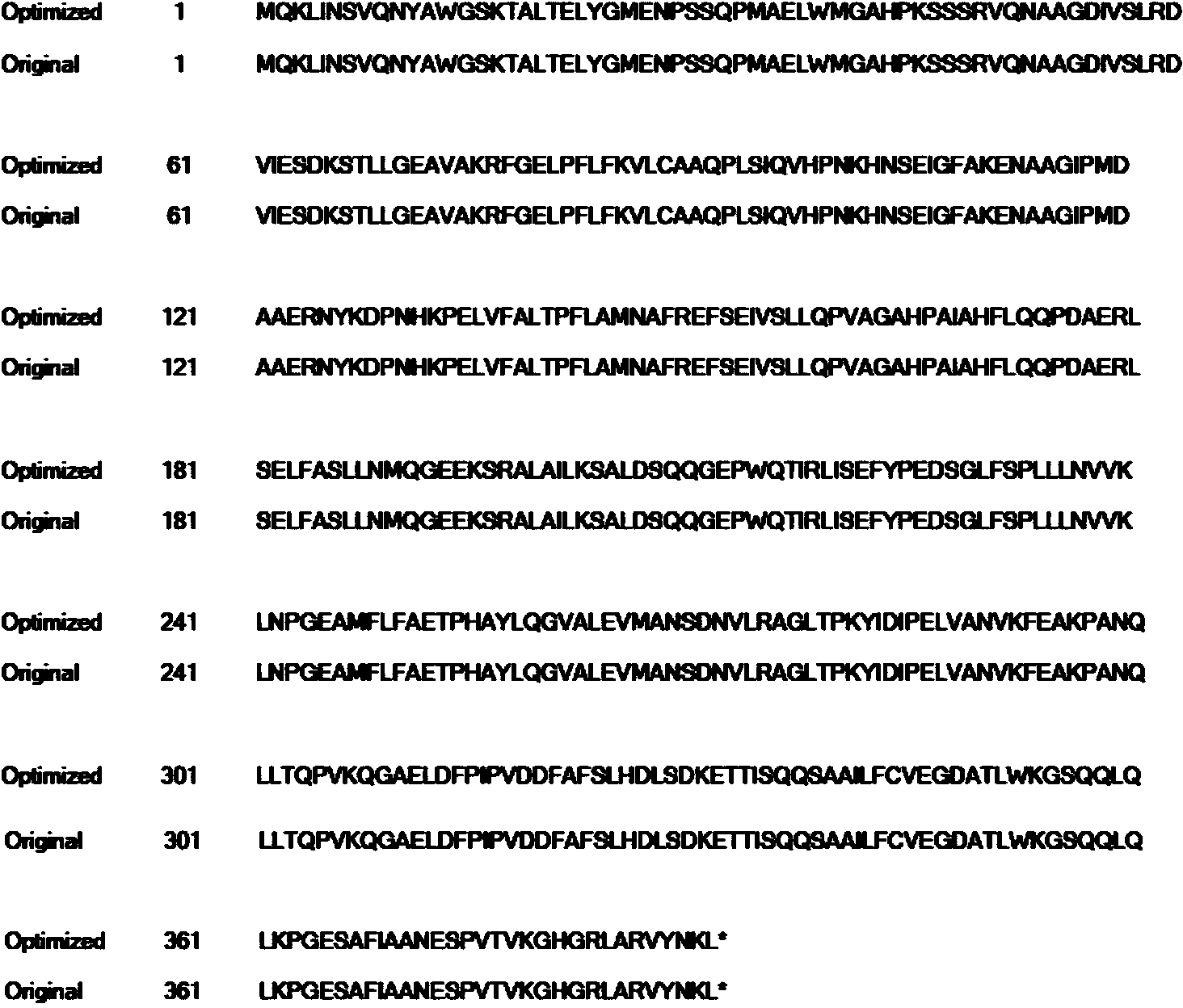Codon vegetalization-transformed PMI gene and applications thereof
A plant-based, codon-based technology, applied in the fields of biotechnology and plant genetic engineering, can solve the problems of affecting expression efficiency, adverse effects of transforming receptor genomes, and affecting use effects, etc.
- Summary
- Abstract
- Description
- Claims
- Application Information
AI Technical Summary
Problems solved by technology
Method used
Image
Examples
Embodiment 1
[0036] Embodiment 1——the codon phytochemical transformation of PMI gene
[0037] According to the information in the GENBANK database, the inventors of the present application collected 92188 CDS sequences of rice, with a total of 34132283 codons, and analyzed the distribution of these codons in rice on the website http: / / www.kazusa.or.jp / codon / Usage. For the same amino acid in the same species, the frequencies of different codons are different. Some codons are used frequently, while others are used less frequently. For example, in rice, the most frequently used leucine (L) codon is CUC, reaching 28.51%, and the least frequently used is UUA, only 6.79%.
[0038] Using rice-preferred codons, the PMI gene from Escherichia coli was planted to obtain a new DNA sequence, and a rice-preferred stop codon TGA was added to the end of the DNA sequence to form a new gene, which was named It is plant PMI, the sequence is shown in SEQ ID NO: 1, see the sequence comparison with PMI figu...
Embodiment 2
[0045] Embodiment 2 - the construction of plant PMI gene plant expression vector and the transformation of Agrobacterium
[0046] From Escherichia coli JM110 containing the PUC57-AMP-plant PMI vector above, use the Axygen plasmid extraction kit to extract the plasmid, digest it with Xho I, and recover the plant PMI fragment. Utilize Xho I enzyme to carry out linearization process to pCAMBIA1381 simultaneously, reclaim pCAMBIA1381, above-mentioned plant PMI fragment and pCAMBIA1381 fragment are connected with T4 ligase (purchased from TaKaRa Company), obtain plant expression vector pCAMBIA1381-plant PMI ( image 3 ), using the freeze-thaw method to transfer the plant expression vector into Agrobacterium tumefaciens EHA105 strain (preserved by the Rice Research Institute of Anhui Academy of Agricultural Sciences) for genetic transformation.
Embodiment 3
[0047] Embodiment 3——using plant PMI as the rice genetic transformation method of screening marker gene
[0048] 1. Induction and pre-culture of mature embryo callus
[0049] The mature seeds of Nipponbare (the Paddy Rice Research Institute of Anhui Academy of Agricultural Sciences are preserved) are shelled, and the seeds with normal appearance and cleanness without mildew are selected, shaken for 90 sec with 70% alcohol, and pour off the alcohol; then use 50% sodium hypochlorite ( The concentration of available chlorine in the stock solution is greater than 4%. Add 1 drop of Tween20) solution per 100 milliliters to clean the seeds, and shake for 45 minutes (180 r / min) on a shaker. Pour off the sodium hypochlorite, wash with sterile water 5-10 times until there is no smell of sodium hypochlorite, finally add sterile water, soak overnight at 30°C. Use a scalpel to separate the embryos along the aleurone layer, put the scutellum up on the induction medium (see Table 1 for ingr...
PUM
 Login to View More
Login to View More Abstract
Description
Claims
Application Information
 Login to View More
Login to View More - R&D
- Intellectual Property
- Life Sciences
- Materials
- Tech Scout
- Unparalleled Data Quality
- Higher Quality Content
- 60% Fewer Hallucinations
Browse by: Latest US Patents, China's latest patents, Technical Efficacy Thesaurus, Application Domain, Technology Topic, Popular Technical Reports.
© 2025 PatSnap. All rights reserved.Legal|Privacy policy|Modern Slavery Act Transparency Statement|Sitemap|About US| Contact US: help@patsnap.com



